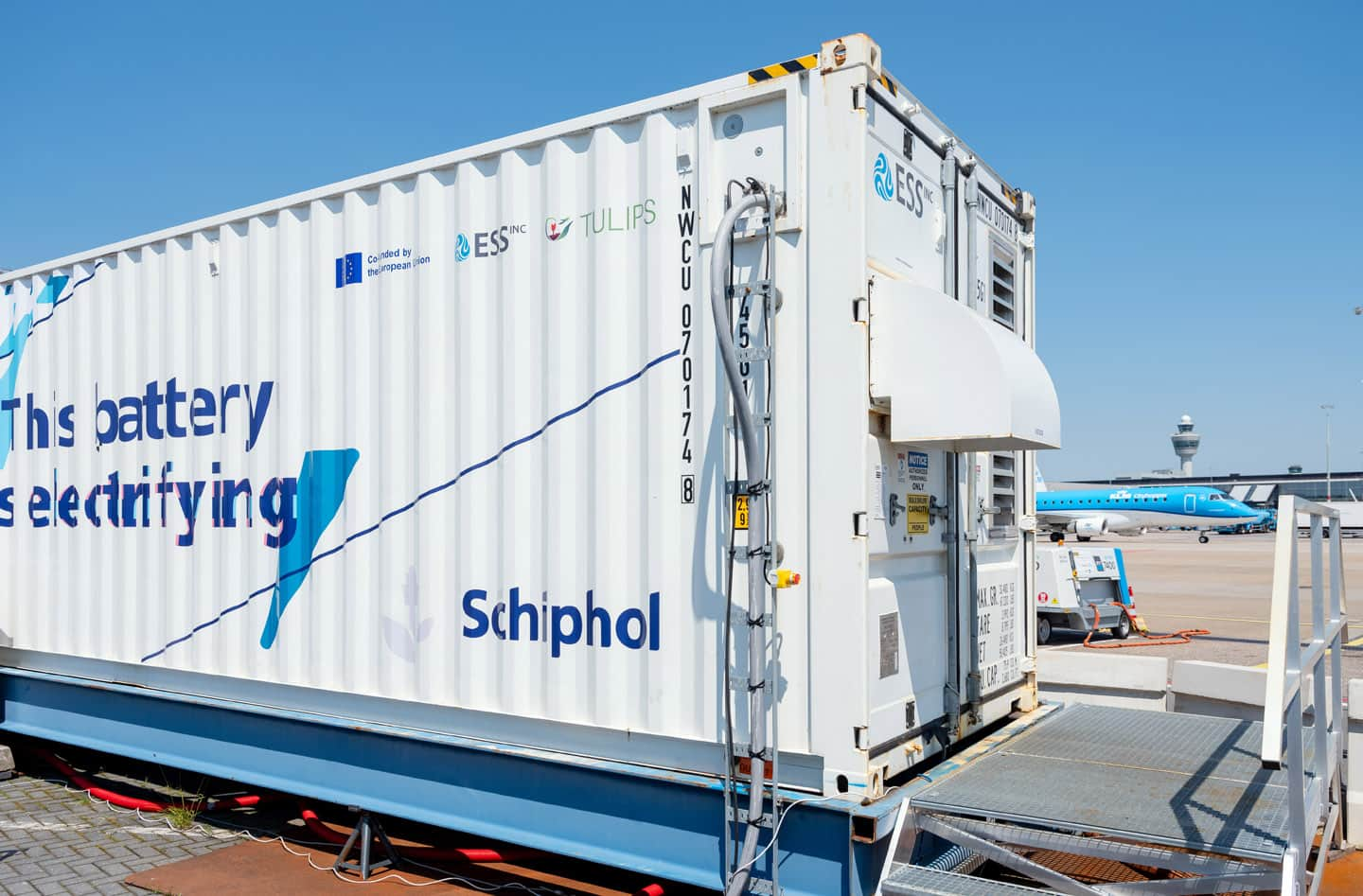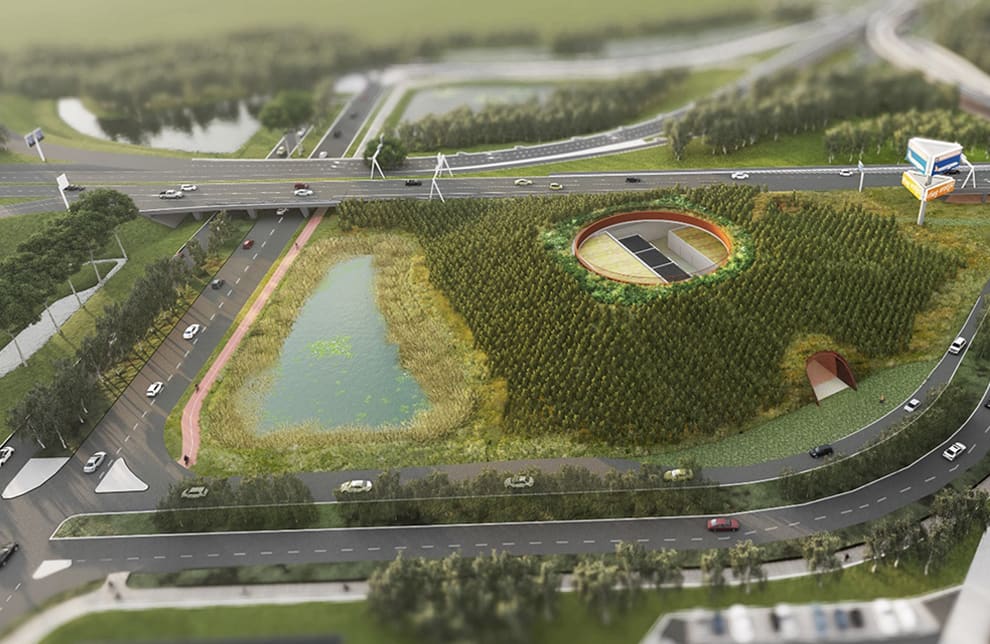Super battery being tested at Schiphol
New at Schiphol: the Iron Flow Battery. In this battery we are able to store a large amount of electricity. With this extra storage, we relieve the overloaded energy grid and have a consistent substantial supply of power for our electric equipment. And that’s urgently needed, because electric equipment is becoming increasingly popular at Schiphol.

An exclusive for Schiphol
The Iron Flow Battery (IFB) is rather hefty. It is the size of a 40 ft shipping container, weighs 40 tonnes and has a maximum storage capacity of 500 kWh. It is located at the A/B apron, home of KLM Cityhopper. If you travel with Cityhopper, you can see the battery when you board your plane. The IFB has not been on the market for long and until now has only been used in the USA. Schiphol therefore has an exclusive with the arrival of the IFB. We are the first airport in the world to have such a battery and the first user of an IFB in Europe.
Testing
Schiphol is now testing how the battery works in practice. For now, it will charge electric Ground Power Units (e-GPUs) at the A/B apron. The e-GPUs power an aircraft when it is on the ground. You can also see those when you board your plane. Among other things, we are testing the user-friendliness, reliability and efficiency of the IFB. If the test goes well, more batteries will come to Schiphol. Because Schiphol's goal is for all the ground equipment around the aircraft to be emission-free, and therefore electric, by 2030.
More natural components without lithium
The Iron Flow Battery is distinguished by its use of natural components, and that is quite special for a battery. It works using iron and salt water, materials that are widely available. They are fireproof too. These are major advantages compared to the commonly used lithium. This is a fire hazard and is often mined under poor working conditions and with damage to the environment. The IFB also does not wear out; its capacity is guaranteed to remain the same for up to 20 years. The IFB is therefore well aligned with Schiphol's ambition to be the most sustainable airport by 2050.
The battery was developed and built by ESS Inc in Oregon, USA. Schiphol's innovation team brought the IFB to the airport. Volker Infra and KES (KLM Equipment Service) are responsible for the management and usage. The battery is co-funded by the EU and part of TULIPS – a European collaboration of 32 aviation parties and knowledge institutes led by Royal Schiphol Group.
Read the previous blogs
-
Special high-voltage substation
Published on:New high-voltage substation contributes to one of Schiphol’s most significant sustainability goals: zero emissions in 2030.

-
More electric equipment
Published on:Most diesel generators have now been replaced by electric ones. Schiphol provides almost all planes parked at the gate with electrical power.

-
Start construction circular checkpoint
Published on:For the new checkpoint we are using material left over after the demolition of three office buildings and three cargo buildings at Schiphol.
